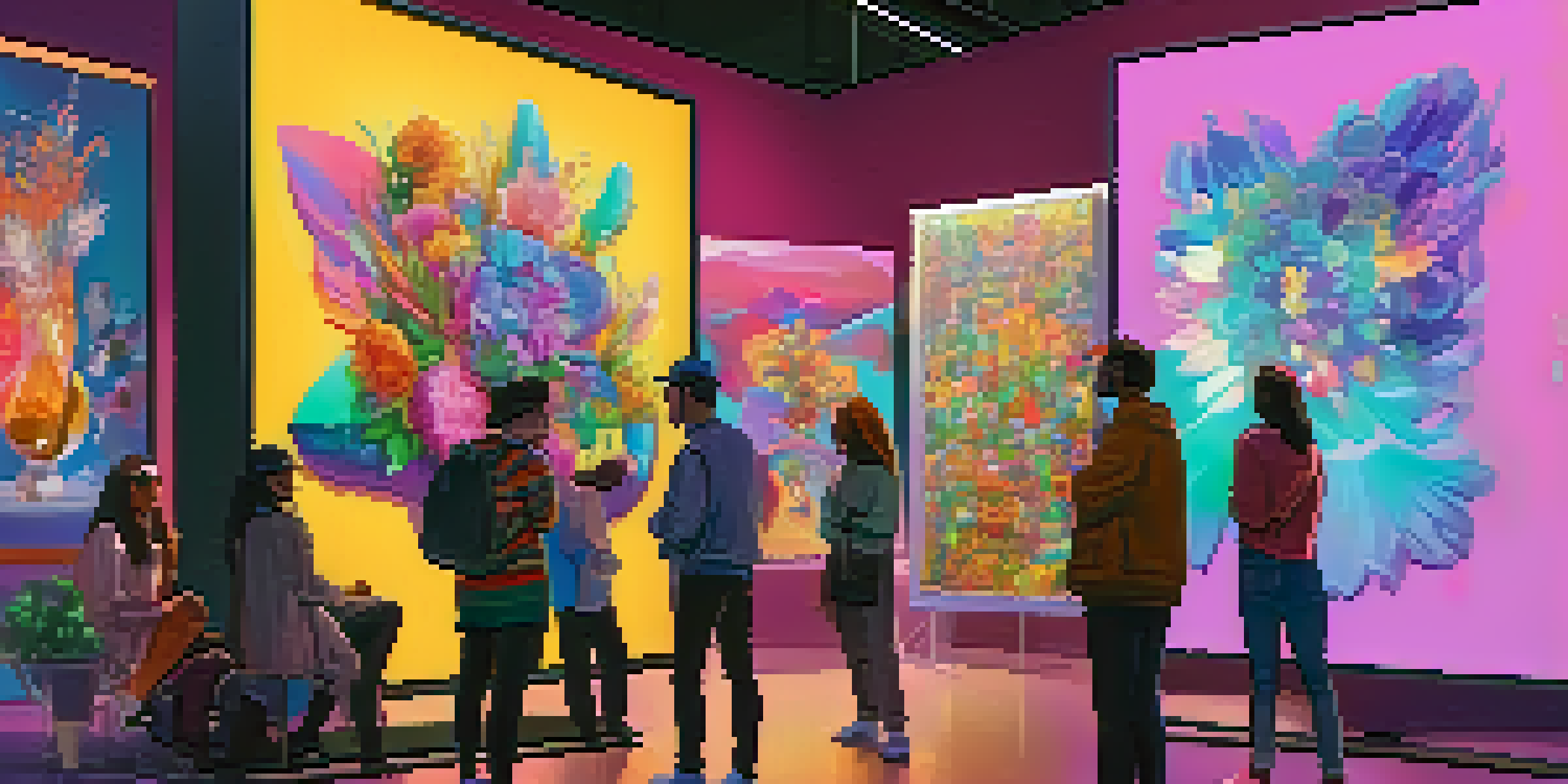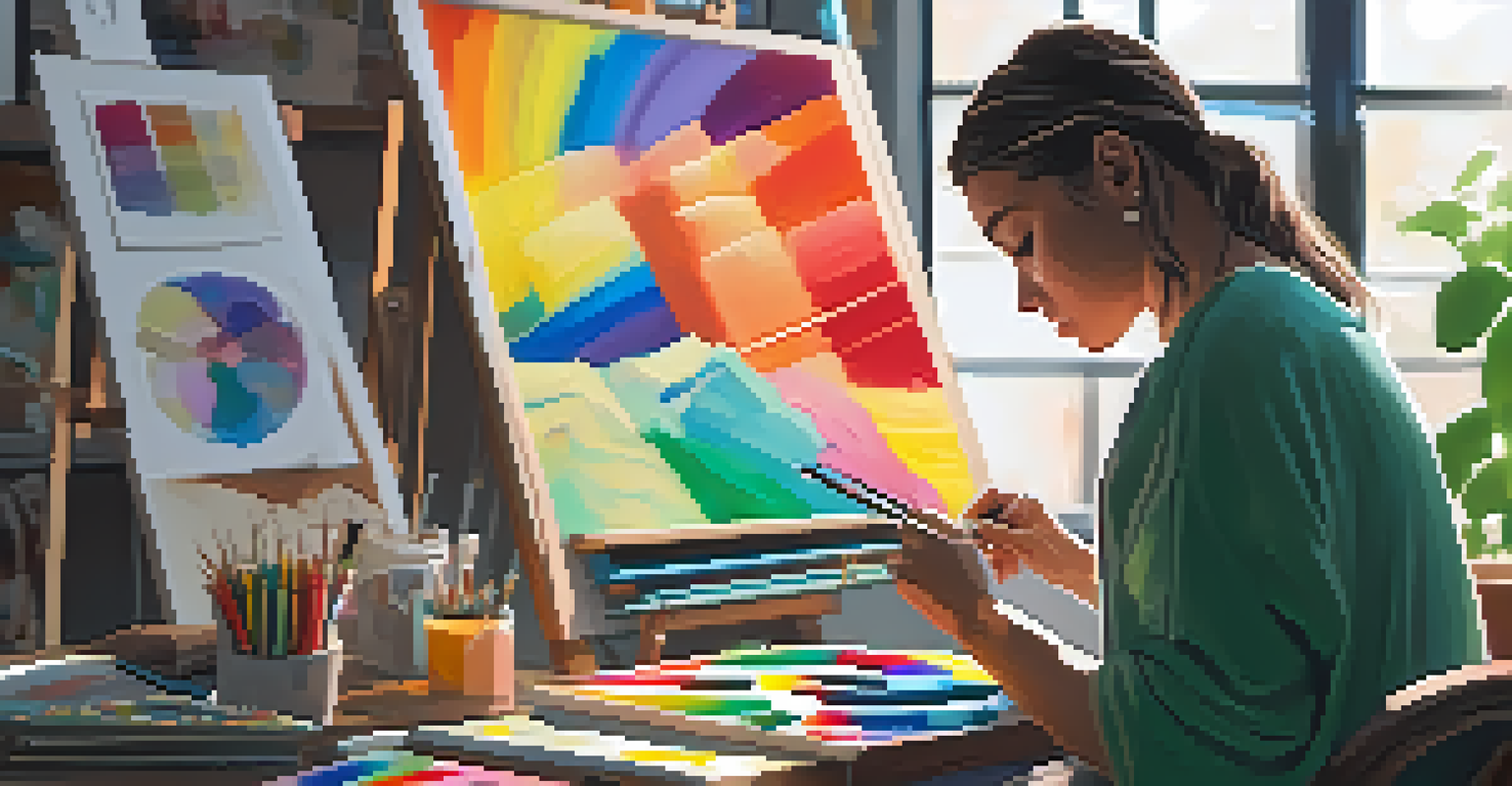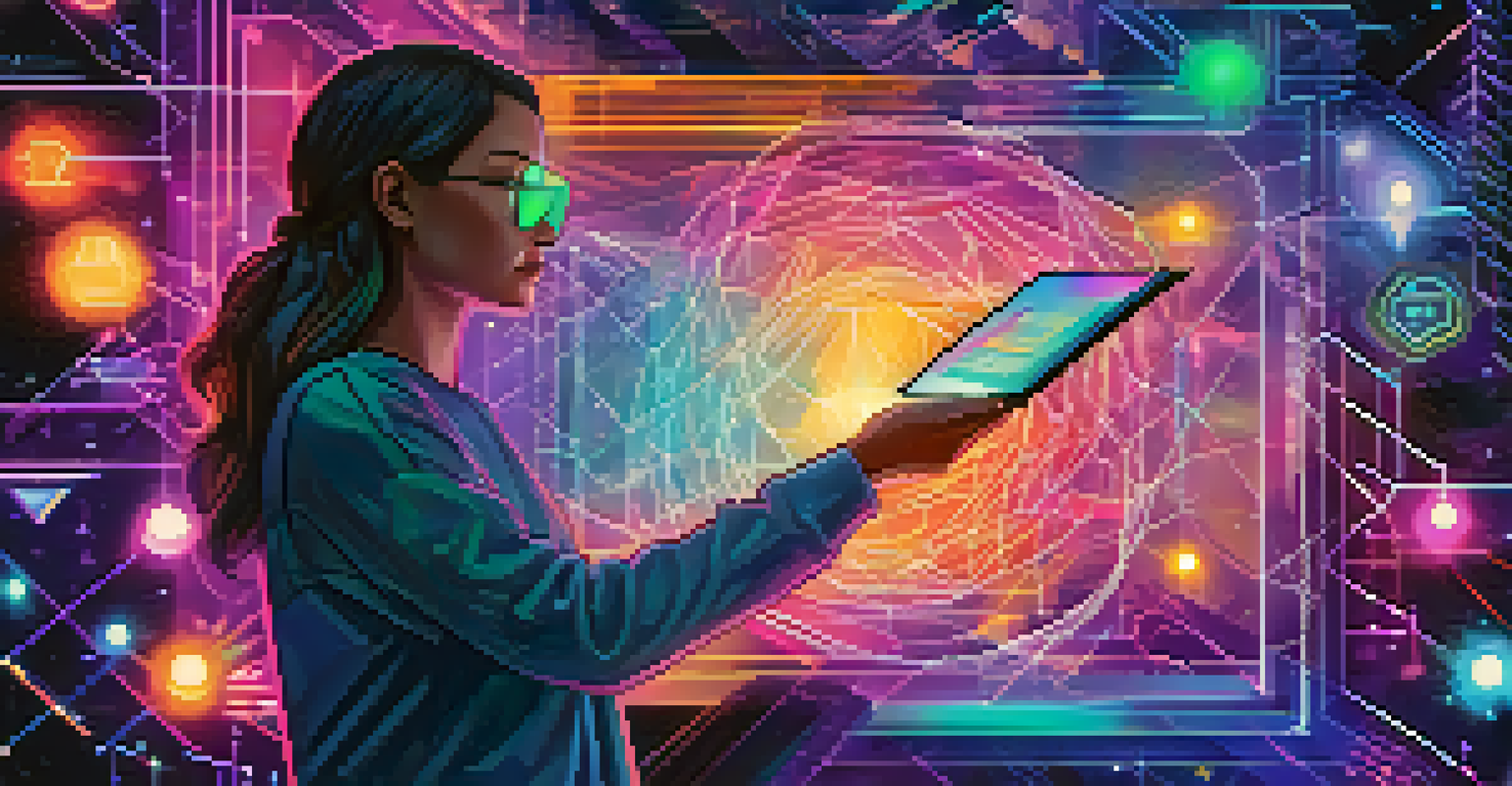Creating Sustainable Income: The Impact of NFTs on Artists

Understanding NFTs and Their Rise in Popularity
NFTs, or non-fungible tokens, have surged in popularity, transforming the way digital art is bought and sold. Unlike traditional art, NFTs create a unique digital certificate of ownership stored on the blockchain. This means that each NFT is one-of-a-kind, making it particularly appealing to collectors and artists alike.
NFTs are a way to prove ownership and authenticity of digital art, creating a new relationship between artists and collectors.
The rise of NFTs can be attributed to the increasing acceptance of digital art and the desire for provenance in the art world. Artists can now sell their work directly to consumers, bypassing galleries and auction houses, which often take significant cuts of the profits. This newfound accessibility has opened doors for many artists who previously struggled to monetize their creations.
As the digital landscape continues to evolve, NFTs represent a significant shift in how art is valued and exchanged. Artists are no longer limited to traditional sales methods; they can engage with their audience in innovative ways, creating a sustainable income stream that adapts to the digital age.
How NFTs Empower Artists Financially
One of the most compelling aspects of NFTs is their potential to provide artists with ongoing revenue. When an artist sells an NFT, they can program a royalty into the contract, ensuring they earn a percentage every time the NFT is resold. This creates a new revenue model, allowing artists to benefit from the appreciation of their work over time.

For example, if an artist creates a digital painting and sells it as an NFT for $1,000, they might set a 10% royalty. If that NFT is later sold for $10,000, the original artist would receive $1,000 from that transaction. This not only incentivizes artists to create more but also fosters a deeper connection between them and their collectors.
NFTs Empower Artists Financially
NFTs offer artists ongoing revenue through programmable royalties, allowing them to benefit from their work's appreciation over time.
Additionally, the ability to sell art directly to consumers means that artists can set their own prices and control their branding. This autonomy can lead to greater financial stability, as artists are no longer at the mercy of traditional gallery systems that can undervalue their work.
Building a Community Through NFTs
NFTs allow artists to foster a sense of community and belonging among their supporters. By creating limited editions or exclusive content, artists can engage their audience on a personal level. This sense of exclusivity not only adds value to the artwork but also helps build a loyal fanbase.
The future of art is digital, and NFTs are the key to unlocking new revenue streams for artists.
Moreover, platforms like Discord and Twitter Spaces have become popular for artists to connect with their collectors and fans. These channels enable artists to share insights, provide updates on new releases, and discuss the creative process. This interactive approach helps demystify the art-making process and enhances the overall experience for both parties.
As artists cultivate their communities, they can also leverage these relationships for future projects. Engaging with fans can lead to collaborative opportunities, sponsorships, or even crowdfunding initiatives, ultimately contributing to more sustainable income sources.
Challenges Artists Face in the NFT Space
Despite the many benefits of NFTs, artists must navigate several challenges to succeed in this space. The technical aspect of minting NFTs can be daunting for those unfamiliar with blockchain technology. Artists may need to invest time and resources into learning how to create and manage their digital assets effectively.
Additionally, the environmental concerns surrounding NFTs have garnered significant attention. The energy consumption of blockchain networks, particularly Ethereum, has raised questions about sustainability. Artists are increasingly seeking eco-friendly alternatives, such as platforms that utilize proof-of-stake mechanisms or carbon offset initiatives.
Building Community with NFTs
Artists can foster a sense of community among their supporters by creating exclusive content and engaging through platforms like Discord.
Lastly, the NFT market is still relatively new and can be volatile. Artists may experience fluctuations in demand or face challenges in standing out in a crowded marketplace. Establishing a clear brand and consistent presence can help mitigate these risks and create a more stable income stream.
The Role of Platforms in Supporting Artists
NFT marketplaces like OpenSea, Rarible, and Foundation play a crucial role in helping artists navigate the NFT landscape. These platforms provide the necessary tools for minting, selling, and promoting digital art, making it easier for artists to enter the market. Many platforms also offer educational resources to help artists understand the intricacies of NFTs.
Moreover, these marketplaces often curate collections or host exhibitions, giving artists the visibility they need to reach a broader audience. Being featured on a reputable platform can significantly enhance an artist's credibility and attract potential buyers. This exposure can lead to higher sales and increased interest in their work.
As the NFT ecosystem continues to grow, platforms are also exploring new ways to support artists financially. Initiatives like grants, artist funds, and collaborative projects can help emerging talents gain a foothold in the industry, ensuring a diverse range of voices and styles within the NFT space.
Educating Artists About NFTs and Blockchain
Education is key for artists looking to venture into the world of NFTs. Understanding the basics of blockchain technology and how NFTs function can empower artists to make informed decisions about their work. Workshops, webinars, and online courses have emerged to fill this knowledge gap and provide artists with the tools they need to succeed.
In addition to technical know-how, artists should also familiarize themselves with marketing strategies tailored to the NFT space. Building an online presence through social media and personal websites can help artists showcase their work and connect with potential buyers. Leveraging storytelling can also create a more engaging narrative around their art, making it more appealing to collectors.
Navigating NFT Challenges
While NFTs present opportunities, artists face challenges such as learning blockchain technology, environmental concerns, and market volatility.
As artists become more knowledgeable about NFTs, they can better navigate the complexities of the market. This understanding can lead to more successful launches, sustainable income, and a deeper connection with their audience, ultimately enhancing their artistic journey.
Looking Ahead: The Future of Art and NFTs
As we look to the future, the relationship between art and NFTs is poised to evolve. With technological advancements and growing acceptance of digital art, we may see new forms of artistic expression emerge that we can't yet imagine. Artists will continue to experiment with NFTs, pushing the boundaries of creativity and redefining what art can be.
The concept of digital ownership may also expand, leading to more collaborative projects and decentralized platforms that empower artists. This shift could result in a more equitable distribution of revenue and recognition within the art community. Artists will increasingly have the opportunity to participate in a global marketplace where their work is valued fairly.

Ultimately, NFTs have the potential to revolutionize the art world, creating opportunities for artists to thrive in ways previously thought impossible. As they navigate this new landscape, artists can harness the power of technology to build sustainable income streams and foster connections with their audience, paving the way for a vibrant future in the digital art realm.